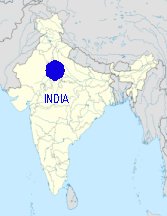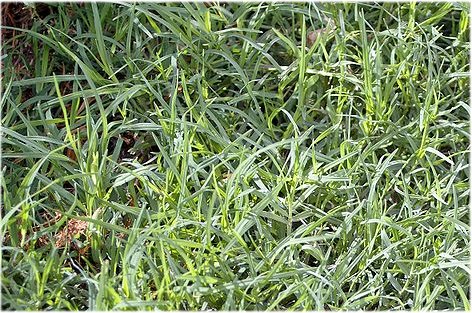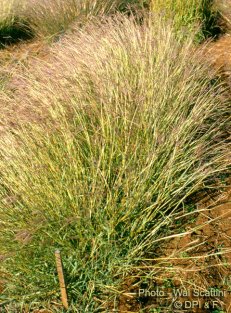|
The Keoladeo National Park or Keoladeo Ghana National Park
formerly known as the Bharatpur Bird Sanctuary in Bharatpur,
Rajasthan, India
is a famous avifauna sanctuary that plays host to thousands
of birds especially during the winter season. Over 230 species
of birds are known to
have made the National Park their home. It is also a major tourist
centre with scores of ornithologists arriving here in the hibernal
season. It was
declared a protected sanctuary in 1971. It is also a declared
World Heritage Site.
Keoladeo Ghana National Park is a man-made and man-managed wetland
and one of the national parks of India. The reserve protects
Bharatpur
from frequent floods, provides grazing grounds for village cattle
and earlier was primarily used as a waterfowl hunting ground.
The 29 km reserve
is locally known as Ghana, and is a mosaic of dry grasslands,
woodlands, woodland swamps, and wetlands. These diverse habitats
are home to
366 bird species, 379 floral species, 50 species of fish, 13
species of snakes, 5 species of lizards, 7 amphibian species,7
turtle species, and a
variety of other invertebrates. Every year thousands of migratory
waterfowl visit the park for wintering breeding etc. The Sanctuary
is one of the
richest bird areas in the world. It is known for nesting of
its resident birds and visiting migratory birds incl. water
birds. The rare Siberian
cranes used to winter in this park but this central
population of Siberian Cranes is now extinct. According to Sir
Peter Scott Keoladeo Sanctuary is the
world’s best bird area. |

Siberian
Crane (This is the last pair which visited Bharatpur)
In
1965 there were aboout 200 cranes here.
Navneet,
http://picasaweb.google.com |
The sanctuary was created 250 years ago. Initially,
it was a natural depression; and was flooded after the Ajan
Bund was constructed by
Maharaja Suraj Mal, the then ruler of the princely state of
Bharatpur, between 1726–1763. The bund was created at the
confluence of two
rivers, the Gambhir and Banganga. The park was a hunting ground
for the maharajas of Bharatpur, a tradition dating back to 1850,
and duck
shoots were organised yearly in honor of the British viceroys.
In one shoot alone in 1938, over 4,273 birds such as mallards
and teals
were
killed by Lord Linlithgow, the then Governor-General of India.
The park was established as a national park on 10 March 1982.
Previously the private duck shooting preserve of the Maharaja
of Bharatpur
since the 1850s, the area was designated as a bird sanctuary
on 13 March 1956 and a Ramsar site under the Wetland Convention
in October
1981. The last big shoot was held in 1964 but the Maharajah
retained shooting rights until 1972. In 1985, the Park was declared
a World
Heritage Site under the world Heritage Convention. In 1982,
grazing was banned in the park, leading to violent clashes between
local farmers
and the government.
The park is 2 kilometers south-east of Bharatpur
and 50 km west of Agra.
The Park is spread over approx 29 square kilometer area.
One third of the Keoladeo National Park habitat is wetland
systems with
varying types of microhabitats having trees, mounds, dykes
and
open water with or without submerged or emergent plants.
The uplands have grasslands (savannas) of tall species
of grass together
with scattered trees and shrubs present in varying density. |
|
A similar habitat with short grasses, such as Cynodon
dactylon and Dicanthium annulatum also
exists. Woodlands with thickets of huge
Kadam trees (Neolamarckia cadamba) are distributed in scattered
pockets. Richness and diversity of plant life inside the Park
is remarkable.
The Park’s flora consists of 379 species of flowering plants
of which 96 are wetland species. The Wetland is a part of the
Indo-Gangetic
Great Plains.
|
|
|
Cynodon
dactylon
http://en.wikipedia.org/wiki/File:Cynodon_dactylon_2.jpg |
Dicanthium
annulatum
http://www.tropicalforages.info/key/Forages/
Media/Html/Dichanthium_annulatum.htm |
In an area characterized by sparse vegetation, the park is the
only spot which has dense vegetation and trees. The principal
vegetation types
are tropical dry deciduous forests intermixed with dry grasslands.
Where the forest has degraded, the greater part of the area
is covered
with shrubs and medium sized trees. The park is a fresh water
swamp and is flooded during the monsoon. For most part of the
year,
effective wetland is only 10 km2. The rest of the area remains
dry.
Dykes divide the wetland into ten units. Each unit has a system
of sluice gates to control its water level. Depth of water ranges
from 1 metre
to 2 metre during rains (July, August and September). In subsequent
months, October to January, the level gets lowered. The area
starts
drying from February. In May and June, the entire area dries.
Water remains only in some depressions. This alternate wetting
and drying
helps to maintain the ecology of the fresh water swamp, ideal
for water-fowl and resident water birds. Arrangement to pump
water from
deep tube wells to fill small depressions to save seeds, spores
and other aquatic life also exist. They are also helpful in
extreme years of
drought.
During 1988, mean maximum temperature ranged from 20.9°
Celsius in January to 47.8°C in May, while the mean temperature
varied from
6.8°C in December to 26.5°C in June. The diurnal temperature
variation ranged from 5°C in January to 50°C in May.
Mean relatively
humidity varied from 62% in March to 83.3% in December. The
mean annual precipitation is 662 millimeters, with rain falling
on an
average of 36 days per year. During 1988 only 395mm of rain
fell during 32 wet days.
Local observers have noted the shrinking of habitat for aquatic
plant species in the Keoladeo National Park in Bharatpur, Rajasthan,
northern India, after a number of years of drought and upstream
water abstraction.
Flora
Forests, mostly in the north-east of the park, are dominated
by kalam or kadam, Neolamarckia cadamba, Mitragyna
parvifolia,
jamun, Syzygium cumini, and babul, Acacia
nilotica. The open woodland is mostly babul with a small
amount of kandi (Prosopis cineraria) and ber (Zizyphus).
|
|
|
|
|
|
Neolamarckia
cadamba
Photo:
J.M.Garg
|
Mitragyna parvifolia
http://soundwaves.usgs.gov/2009/08/fieldwork3.html
|
Syzygium
cumini
http://en.wikipedia.org/wiki/File:Jaam_tree1.JPG
|
Acacia
nilotica
http://www.plantzafrica.com/plantab/acacianilot.htm
|
Piloo (Salvadora oleoides and Salvadora persica) also present
in the park and happens to be virtually the only woody plants
found in areas of
saline soil. The aquatic vegetation is rich and provides a valuable
food source for waterfowl.
Fauna
Macro invertebrates such as worms, insects and mollusks, though
more abundant in variety and numbers than any other group of
organisms, are
present mostly in aquatic habitats. They are food for many fish
and birds, as well as some animal species, and hence, constitute
a major link in
the food chain and functioning of the ecosystem. Land insects
are in abundance and have a positive effect on the breeding
of land birds.
Keoladeo National Park is popularly known as “bird paradise”.
Over 370 bird species have been recorded in the park. Ornithologically,
the park
assumes significance in two respects: One because of its strategic
location as a staging ground for migratory waterfowl arriving
in the Indian
subcontinent before dispersing to various regions. Further waterfowl
converge here before departing to breeding grounds in western
Palearctic
region. In addition, the wetland is a wintering area for massive
congregations of waterfowl. It is also the only regular wintering
area in India for the Critically Endangered Siberian Crane.
(See above)
Waterfowls
The park's location in the Gangetic Plain makes it an unrivalled
breeding site for herons,
storks and cormorants,
and an important wintering
ground for large numbers of migrant
ducks. The most common waterfowl are gadwall, shoveler,
common
teal, cotton teal, tufted
duck,
comb duck, little cormorant, great cormorant, Indian shag, ruff,
painted stork, white
spoonbill, Asian open-billed stork, oriental ibis, darter,
common
sandpiper, wood sandpiper and green sandpiper. Sarus
crane, with its spectacular courtship dance, is also
found here.
Landbirds
Among landbirds are a rich assortment consisting of warblers,
babblers, bee-eaters, bulbuls, buntings,
chats,
partridges and quails. Grey hornbill
and Marshall's iora are also present. There are many birds of
prey including the osprey,
peregrine,
Pallas' sea eagle, short-toed eagle, tawny eagle,
imperial eagle, spotted eagle and crested serpent eagle. Greater
spotted eagle has recently been recorded breeding here, a new
breeding record for
the species in India.

A male Sambar deer
Photo:Wikigringo,
http://en.wikipedia.org/wiki/File:Sambhar_deer.jpg |
Mammals
Mammalian fauna of Keoladeo National Park is equally rich with
27 identified species. Blue bull, feral cattle, and spotted
deer are common while
sambar are few. Wild
boar and porcupine are often spotted sneaking out of
the Park to raid crop fields. Two species of Mongoose,
the small
Indian mongoose and the common Indian Gray Mongoose, are occasionally
found. Two species of lesser cats – the jungle cat and
the fishing
cat and two species of civets – common palm civet and small
Indian civet though rare are present. The smooth Indian otter
can be seen attacking
birds such as coots and at times crossing the woodlands. Jackals
and Hyenas are also sighted and have taken up the role of predators
and fee
d on birds and rodents. Many species of rats, mice, gerbils
and bats are also found in the Park.
Other Species
Fish fauna of the park comprises 43 species, of which 37 enter
the park along with the water from Ajan Bund, and six species
are breeding residents. During a good rainy season the park
receives around 65 million fish fry and fingerlings. The fish
population and diversity are very important as they form the
food source of many birds.

Langur taken in Pench
National Park, India
Photo:
Siddhi
, http://en.wikipedia.org/wiki/File:Langur.jpg
|
Herpetofauna of Keoladeo National Park is very rich. Out of
the ten species of turtles that are seen in Rajasthan, seven
are present in this park.
Besides this, there are five lizard species, thirteen snake
species and seven species of amphibians. The Bullfrog and skipper
frog are commonly
found in the wetlands. It is very easy to see a python out of
its burrow and basking in the sun on a sunny winter day. The
common monitor lizard,
Indian porcupine and Bi-colored leaf-nose Bat have been seen
in the same burrow as that of the python. The poisonous snakes
found in the park
are krait, cobra and Russell’s viper. Primates are rhesus
macaque and langur. Large predators are absent, leopards having
been deliberately
exterminated by 1964, but small carnivores include Bengal fox,
jackal, striped hyena, common palm civet, small Indian civet,
Indian grey mongoose
(Herpestes edwardsi), fishing cat, leopard cat, jungle cat and
smooth-coated otter. Ungulates include blackbuck, chital, sambar,
hog deer, nilgai
and wild boar and feral cattle. Other mammals include Indian
porcupine and Indian hare. During the year 2007–2008 attempts
have been
made to eradicate Prosopis Juliflora/ Cineraria to rid the park
of mono culture and enable natural vegetation to regenerate.
Source: http://en.wikipedia.org/wiki/Keoladeo_National_Park
and others. |
|

















